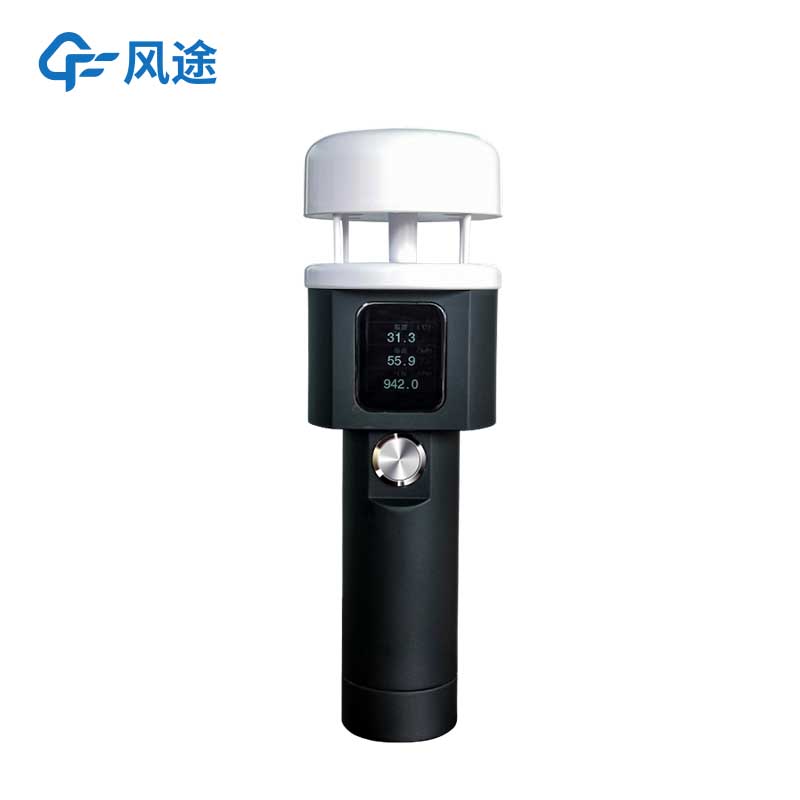Tianyi Sensor IOT Technology Co., Ltd
Sales Manager:Ms. Emily Wang
Cel,Whatsapp,Wechat:+86 15898932201
Email:info@fengtutec.com
Add:No. 155 Optoelectronic Industry Accelerator, Gaoxin District, Weifang, Shandong, China

Sales Manager:Ms. Emily Wang
Cel,Whatsapp,Wechat:+86 15898932201
Email:info@fengtutec.com
Add:No. 155 Optoelectronic Industry Accelerator, Gaoxin District, Weifang, Shandong, China
time:2025-06-27 08:57:01 source:Weather Station viewed:122 time
Handheld weather stations provide convenience for people to obtain meteorological data anytime and anywhere. Among them, mechanical handheld weather stations and ultrasonic handheld weather stations are two common types. What are the differences between them? How should consumers choose?
Differences Between Mechanical and Ultrasonic Handheld Weather Stations
1. Different Working Principles
Mechanical Handheld Weather Station: It relies on traditional mechanical sensors.
For wind speed measurement, it usually uses a wind cup. The wind pushes the wind cup to rotate, and the wind speed is calculated based on the rotation speed.
For wind direction measurement, it depends on a wind vane. The arrow of the wind vane always points to the direction from which the wind blows to determine the wind direction.
Ultrasonic Handheld Weather Station: It applies ultrasonic technology to calculate meteorological parameters by transmitting and receiving ultrasonic signals.
For example, when measuring wind speed and direction, it uses the time difference of ultrasonic waves propagating in the air and combines the propagation characteristics of sound waves to calculate the results.
2. Variances in Measurement Accuracy
Mechanical Handheld Weather Station: Its accuracy is greatly affected by the precision of mechanical sensors and environmental conditions. In harsh environments such as dusty, rainy, snowy, or icy conditions, mechanical components may get stuck or worn, leading to reduced measurement accuracy. Moreover, with prolonged use, drift and error accumulation may occur.
Ultrasonic Handheld Weather Station: It adopts non-contact measurement with higher accuracy. Ultrasonic technology is sensitive to minor air flow changes, enabling precise detection of parameters such as wind speed and direction. Additionally, its measurement accuracy remains relatively stable in different environments.
3. Differences in Structural Complexity and Maintenance Difficulty
Mechanical Handheld Weather Station: It has a relatively simple structure, composed of traditional mechanical components such as wind cups, wind vanes, thermometers, and hygrometers, making it easy to understand and operate. Ordinary users can get started without complex professional knowledge. However, its mechanical components are prone to wear and tear, requiring regular cleaning, lubrication, and calibration, resulting in higher maintenance costs.
Ultrasonic Handheld Weather Station: It has a complex structure, integrating electronic components, ultrasonic transducers, etc., with high requirements for manufacturing processes and technology. However, due to no mechanical wear, daily maintenance only involves checking the battery and cleaning the sensor surface, making maintenance relatively simple.
4. Cost Differences
Mechanical Handheld Weather Station: Due to its simple structure and mature technology, it has a low manufacturing cost and an affordable price, making it suitable for users with limited budgets or those who have low requirements for accuracy.
Ultrasonic Handheld Weather Station: It has high research and development, production, and manufacturing costs, so the price is relatively expensive. However, its high precision and stable performance can meet the needs of professional fields with high requirements for meteorological data.
How Should Consumers Choose?
Choose Mechanical Handheld Weather Station if:
It is used for daily interest observation, emergency situations with low accuracy requirements, or when the budget is limited.
Choose Ultrasonic Handheld Weather Station if:
It is applied to scenarios with high requirements for the accuracy and stability of meteorological data, such as scientific research, environmental monitoring, outdoor sports safety protection, etc.

Scenic areas pay particular attention to negative oxygen ions because the concentration of negative oxygen ions is an important indicator for measuring the quality of air and the ecological environment. Negative oxygen ions have the functions of purifying the air, improving cardiopulmonary function,...
Explosion - proof weather stations are meteorological monitoring devices specifically designed to operate in hazardous environments. With the development of industries such as manufacturing, military, and chemical, the demand for explosion - proof weather stations has been growing steadily. The main...
The standout advantage of the Portable Weather Station is its "portability," a feature directly reflected in its name. Compared with traditional fixed meteorological monitoring equipment, it has a significantly smaller size and lighter weight, with its overall design fully considering the...
Why measure the flow velocity of a river?First, it provides data support for water resources management. By mastering the river flow velocity, water resources can be rationally allocated to ensure the water demand for daily life and production.Second, it helps with flood control and disaster reducti...